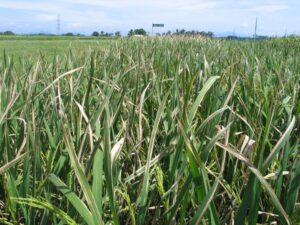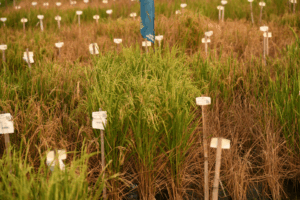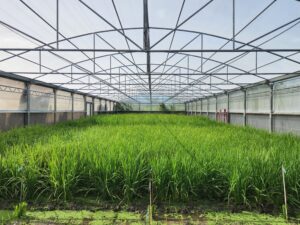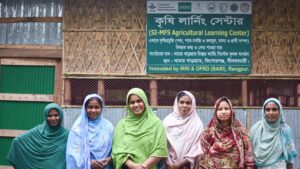The Vietnamese government is developing food system alternatives to rice as one of the countries that pledged to reduce methane emissions by 30 percent by 2030 at the United Nations COP26 summit in Scotland. About 15% of all the greenhouse gases that Vietnam produces come from rice production.
By 2030, the government hopes to reduce land under rice cultivation in the Mekong Delta region by 300,000 hectares from the current 1.5 million hectares.
Droughts, floods, and rising sea levels due to climate change are also making rice growing less productive and profitable in the Mekong Delta.
Read the full story at Al Jazeera
More on rice production in the Mekong Delta
Vietnam adopts pre-emptive measures in the Mekong River Delta against El Niño
In the Mekong River Delta, over 1.7 million hectares of land are being used for rice production. This is more than half of the total arable land in the region. To maintain its status as the “rice bowl” of Vietnam, MRD’s rice production sector should be resilient to the different climate-related risks.
Aggravated by the occurrence of El Niño–Southern Oscillation (ENSO), MRD has been frequently affected by salinity intrusion and drought during winter-spring season. For instance, during the 2015-2016 ENSO event, El Niño intensified the drought in the region causing rice production loss of 1.2M tons (equivalent to 220,000 hectares).
Vietnam expands CS-MAP program after successful implementation in Mekong Delta
The Winter-Spring rice crop of 2019-2020 was a successful harvest in the Mekong River Delta (MRD), Vietnam despite the most severe salinity intrusion in history. The salt-water intrusion period in 2020 started almost 3 months earlier and lasted longer compared with the previous years’ averages*; the salinity levels constantly remained at high levels from February to May, threatening rice production. Nevertheless, MRD provinces managed to win big – the result of a set of adaptive measures, particularly the shift in cropping structure and sowing and harvesting calendars, guided by the implementation of the Climate-Smart Mapping and Adaptation Planning (CS-MAP) approach.
Vietnam can prepare for salinity and drought, experts say
The rice fields of Vietnamese farmers in the Mekong River Delta and other coastal areas have recently been undergoing acute drought and saltwater intrusion. However, according to scientists at IRRI), these problems can be foreseen and viable options are being made available to help farmers cope and avoid production and income losses.
Presiding at a recent workshop, Cao Duc Phat, Vietnam’s Minister of Agriculture and Rural Development, expressed deep concern about these ongoing disasters, hence, the discussion on possible solutions and resources in the short- and long-term. Across the country, hundreds of hectares of rice paddies have already been affected by salinity and drought.









